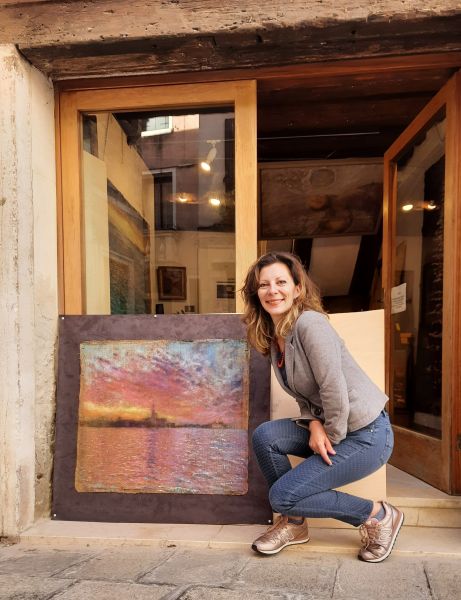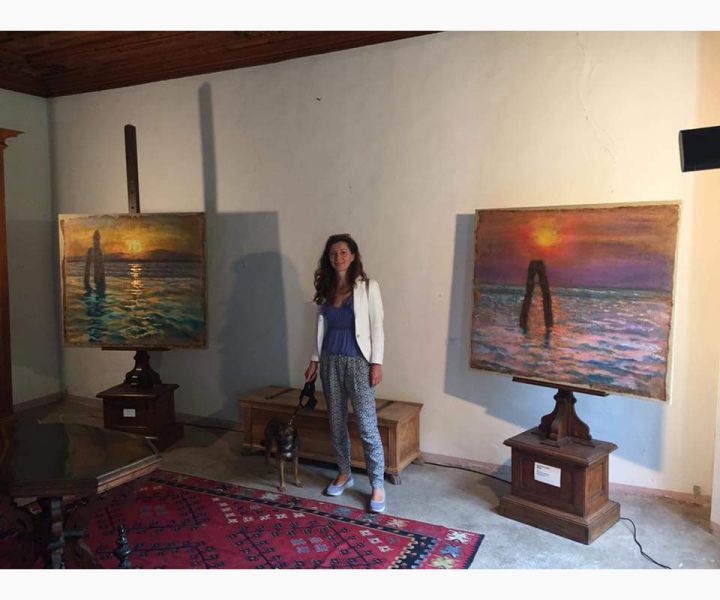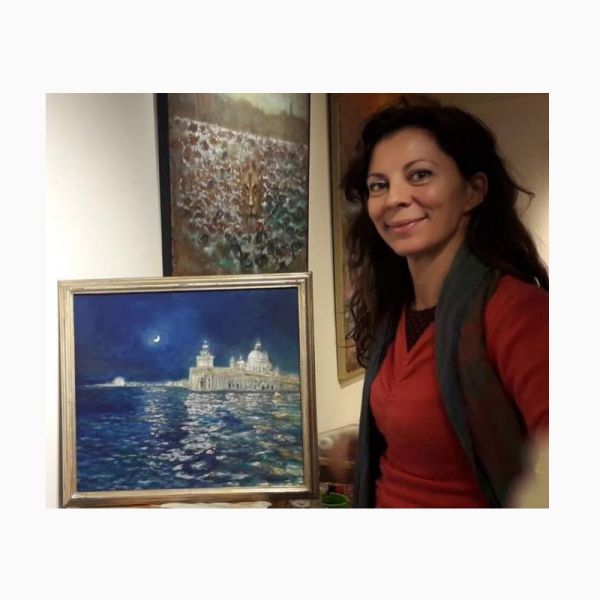Poetics and Technique
I work on ancient canvases, 100 to 300 years old, retaining their original size. A seam can be often found in the larger canvases, it was once used to make larger paintings called teleri.
Seams, tears, stains and the same irregular texture of these particular canvases remind me of the "holy old age" of Venice and in my works they are transformed into horizons, peeling plaster, crooked walls, shadows of perspectives..
The brown color of the canvas emerges among the colors deliberately laid in more tenuous veils. The rough canvas contrasted with the shiny gold and silver leaf and the oil colors match the bare bricks placed side by side to the rich marmorini, the stone of Istria and the precious sculptural decorations that adorn and make this city mystic
The protagonist and creator of everything is the light that is reflected in the water of the lagoon, just like my (our) soul is reflected in this world, drawing joy and inspiration from it.
Life
Elisabetta Zanutto was born in Venice in 1976. In 1996 she enrolled at the Accademia Aldo Galli in Como, where she took specialization courses in artistic techniques and restoration of paintings on canvas and board, including two years in workshops. She also studied restoration of frescoes and plasterwork (with two years of on-site experience), chemistry of restoration (for four years), engraving techniques, ceramics and kiln firing techniques, photography and dark room developing.
In 2001 Elisabetta graduated in painting and painting conservation from the accademia di Como with a thesis entitled Terra visioni e lacerazioni (Earth, visions and tears), in which she explored the work of the ceramicist of Leoncllo Leonardi. She also submitted a painting, a temporal triptych (past—present—future), painted on fragments of canvas (retrieved from the walls of her studio when it was being renovated) embedded in resin panels. This was her first abstract piece.
In 2002 she set up her own art conservation business, where she worked on paintings from all periods for two years, using new methods combined with the skills she learned from her father, who came from a family of restorers and painters. Under the guidance of Alberto Finozzi, she attended courses on the conservation of painting supports using a low pressure conservation table, as well as the most suitable adhesives and consolidants for the conservation of a work depending on its age and condition. With Paolo Cremonesi she learned new methods of cleaning paintings and with Stefano Volpin methods of taking samples and performing chemical analyses. In this period she painted abstract works, collages, with paper and canvas.


